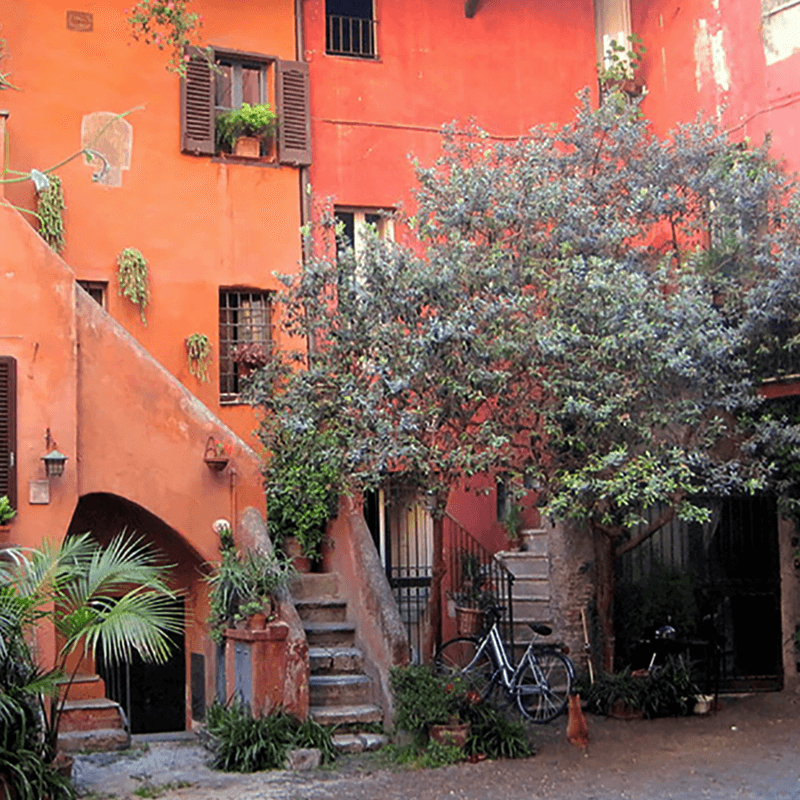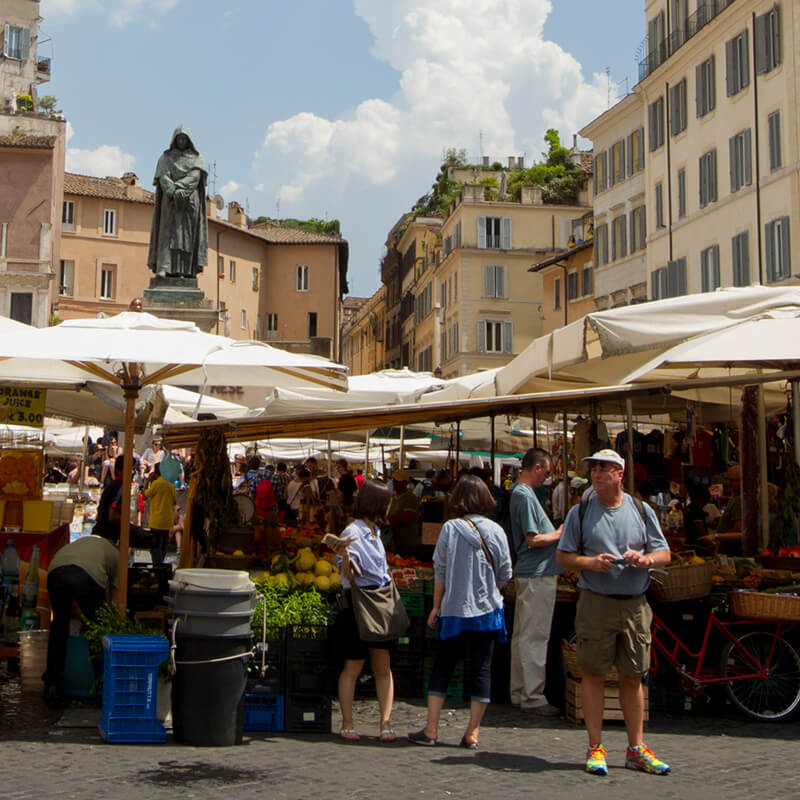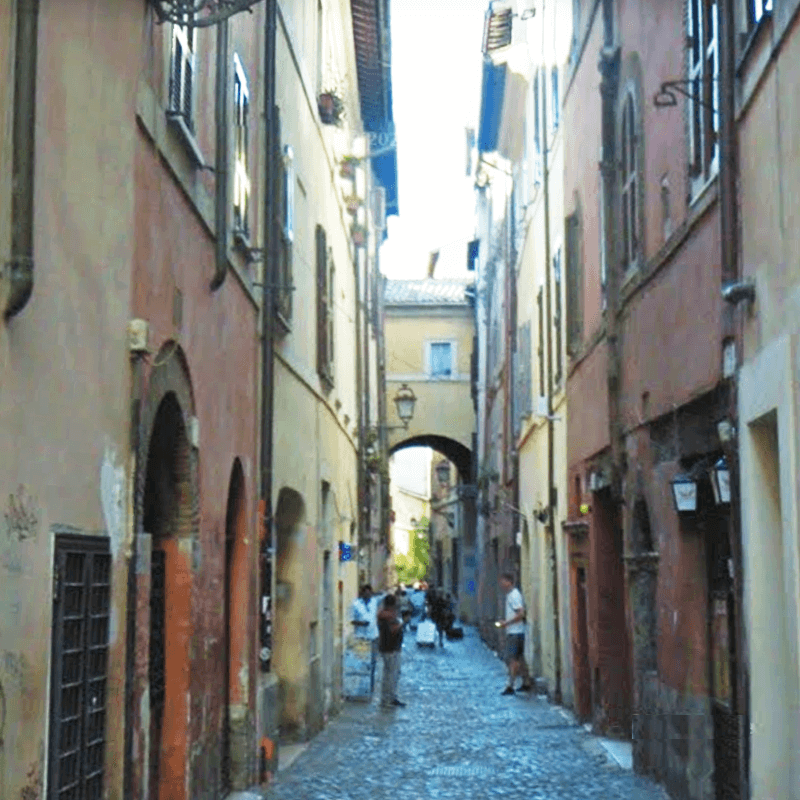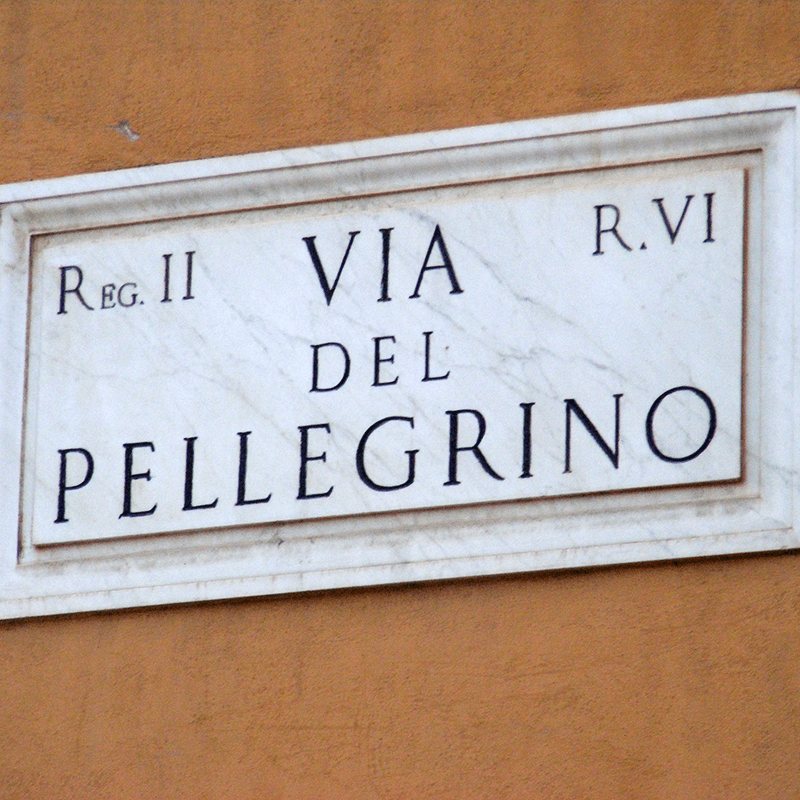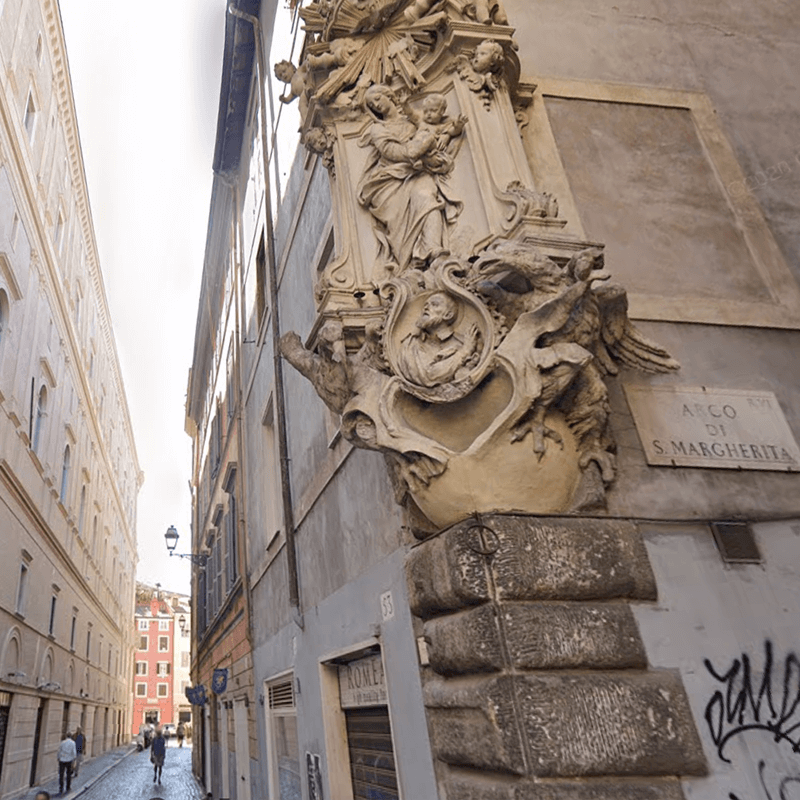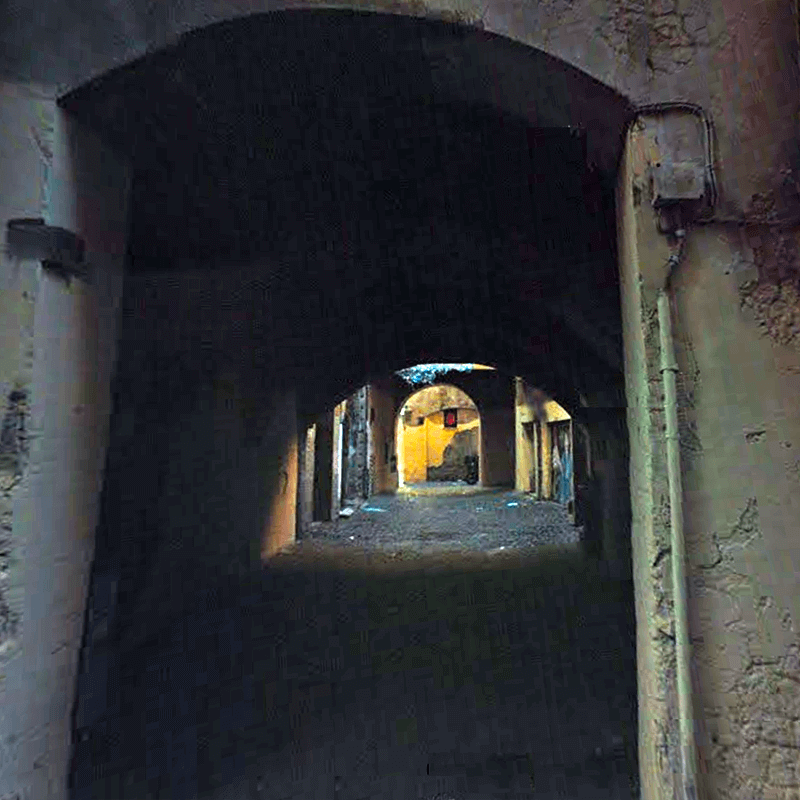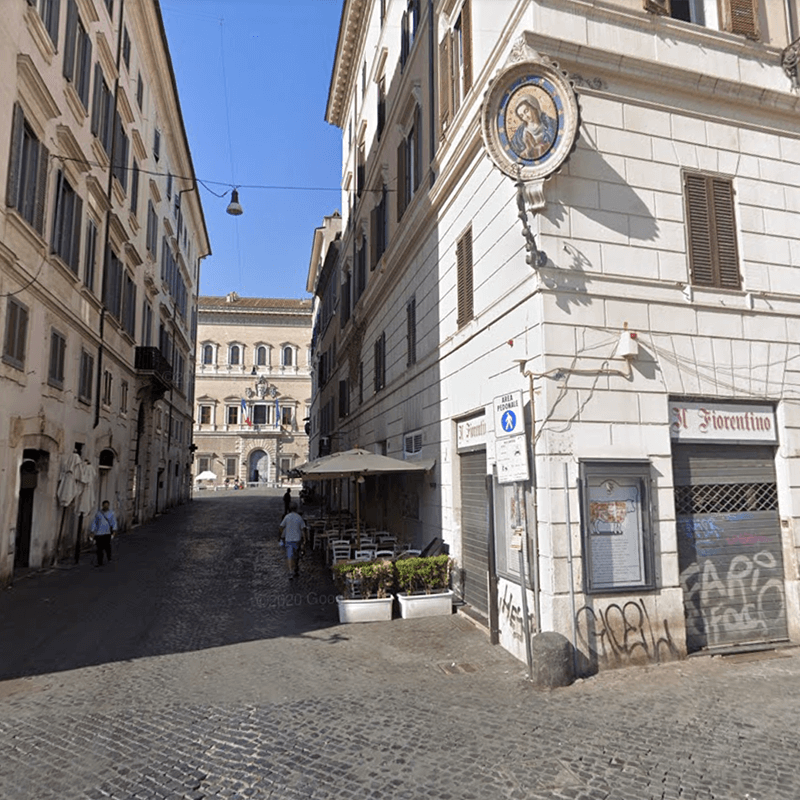There is a space, in the center of Rome, which smells incredibly of medieval Rome, and which appears far from the noise of the city, even if it’s in the heart of one of the liveliest areas of Rome: Campo de’ Fiori.
Campo de’ Fiori has many faces – a morning face, when the main square is occupied by one of the oldest open-air markets in Rome; an afternoon face, with shopping and aperitifs, and a night face, which is also one of the many nightlife scenes of Rome. In short, there is something for all tastes, including the possibilities for walks through the neighbourhood and the alleys that surround Campo de’ Fiori, and which connect the famous roman square with many other interesting areas to discover and explore.
The main square of Campo de’ Fiori gives access to Via del Pellegrino, which takes its current name as this street represented one of the main pilgrim (in Italian, pellegrino) routes to Saint Peter coming from the center of Rome. In the Campo de’ Fiori area there was no shortage of merchants who traded any product, so we are more inclined to support a second, much more credible hypothesis, which links the name Via del Pellegrino to a famous tavern called “Osteria del Pellegrino“.
Yet, from this continuous coming and going of merchants, pilgrims, and today tourists, you can arrive at an open space a few meters from Campo de’ Fiori, where the swarm of passers-by mixes with the voices of the Roman stall holders, in the shadow of the statue, impassive and severe, by Giordano Bruno. We are talking about the Arco degli Acetari, located in Via del Pellegrino at number 44; a secluded, intimate corner where, as they always say in these cases, it seems that time has stopped.
Arco degli Acetari can be accessed uniquely from Via del Pellegrino; passing under the arch that connects two buildings we find ourselves in an environment that makes us think of everything except Rome. A space that has preserved unusual characteristics for the Capital, different from the shine and expression of power of the large palaces and monumental churches: a courtyard overlooked by colorful houses with external stairs, some bare architectural elements, narrow spaces, clothes hung out to dry, flowered balconies, trees that climb up to touch the windows of homes. Despite some recent interventions, this medieval corner has not experienced the great building and urban upheaval that, during the 1600s, affected and completely transformed Rome. It’s a nativity scene corner that refers to a city that no longer exists and, for this reason, it’s even more precious.
A curiosity about Arco degli Acetari: the name of this hidden corner of Rome comes from the term Acquacetosari, later also called “Acetosari“, i.e. from the retailers of Acqua Acetosa who must have had their warehouses here, among narrow streets and alleys stratified over the centuries. In these walls it is often possible to find reused elements such as ancient Roman columns inserted at the corners of the streets, which served to protect the walls of the buildings from the continuous impacts and rubbing caused by carriages, carts and carts, such as those of the Acetosari intent on reaching as soon as possible the Campo de’ Fiori market to see their product.
Acqua Acetosa is a drink based on water, sugar and vinegar, that in medieval Rome was believed to be curative for the kidneys, spleen, liver and a thousand other ailments. Acqua Acetosa was popular in the past that it gave rise to the profession of acetosaro, who transported the precious liquid inside of the flasks closed with straw caps up to the houses of the city, with the help of carts pulled by donkeys.
From this fragment of the Rome of the past, within a few minutes on foot from Arco degli Acetari, you can reach, in addition to the famous and already mentioned Piazza di Campo de’ Fiori, also Piazza Navona, Largo di Torre Argentina, the Palazzo della Cancelleria and the Palazzo Farnese, up to Via Giulia, Via del Governo Vecchio, Piazza della Chiesa Nuova, and many other interesting Roman destinations that are a very short walking distance from each other. Campo de’ Fiori can certainly be considered one of the many “centers of Rome“.
Interested in discovering the most evocative places of the Eternal City? Follow me on my guided tour of the Squares, Palaces and Fountains of Rome or on another of my tours and guided visits to Rome and its province, or one of our typical roman experiences of local art, food and crafts. Get in touch for info and reservations, and continue following us on Facebook and Instagram.

